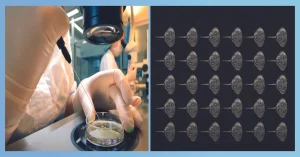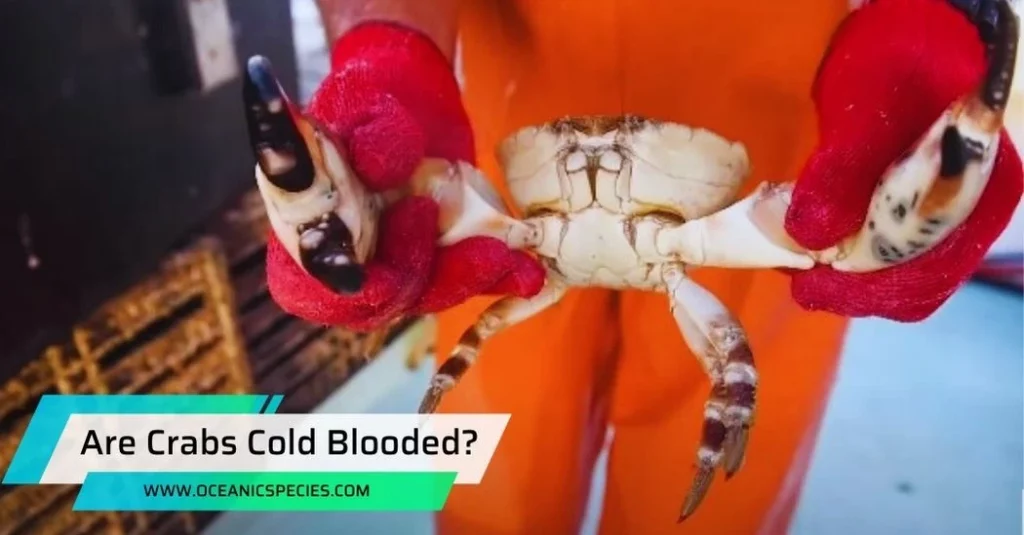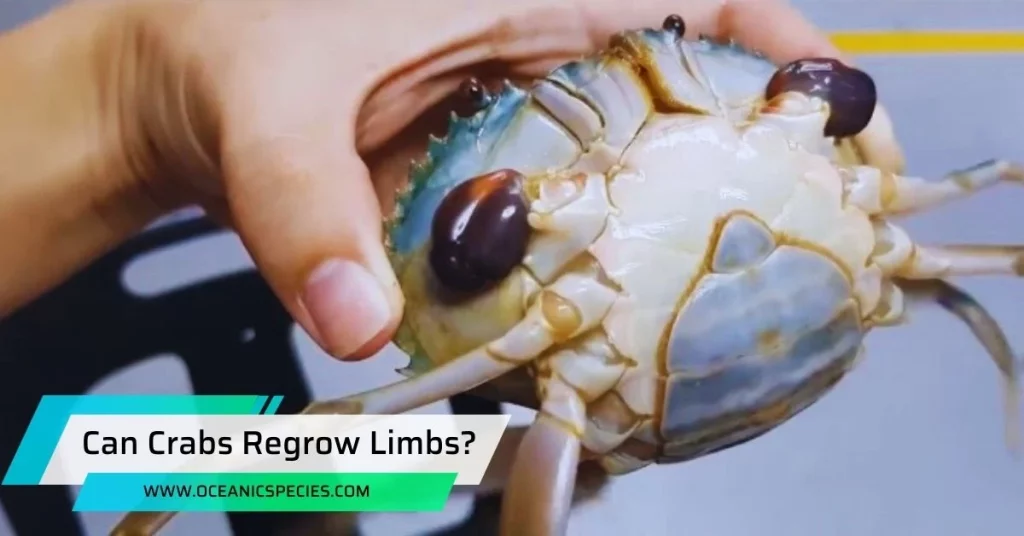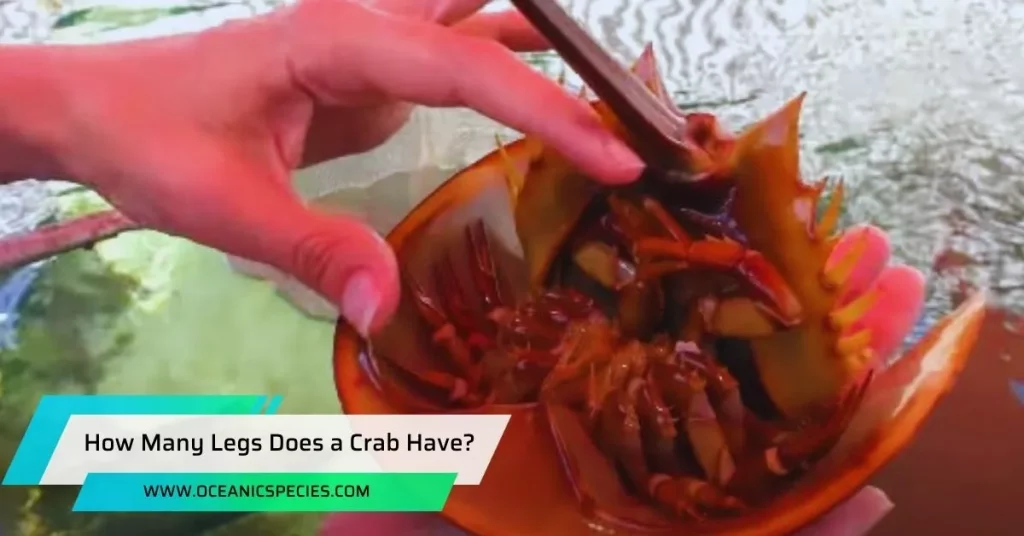Yes, crabs are cold-blooded animals. As ectothermic creatures, their body temperature is regulated by the temperature of their surroundings.
This means that their internal body temperature is influenced by the external environment, and they rely on the environment to stay warm or cool.
Understanding Cold-Blooded Animals
Crabs, including hermit crabs, are cold-blooded animals. As ectothermic creatures, their body temperature relies on the temperature of their surroundings for regulation.
Definition And Characteristics Of Cold-Blooded Animals:
Cold-blooded animals, also known as ectothermic animals, are creatures that regulate their body temperature based on the surrounding environment. Unlike warm-blooded animals (endothermic animals) that maintain a constant internal body temperature, cold-blooded animals have body temperatures that fluctuate with the temperature of their surroundings.
Characteristics of cold-blooded animals include:
- They rely on external heat sources, such as sunlight or warm surfaces, to increase their body temperature.
- Their metabolism directly affects their body temperature, as their metabolic rate changes with environmental conditions.
- They are unable to generate their own heat through internal processes.
- Cold-blooded animals often exhibit slower metabolism and slower movements during colder temperatures, as their bodily functions slow down.
How Cold-Blooded Animals Regulate Their Body Temperature:
Cold-blooded animals have various mechanisms to regulate their body temperature. Here are some ways they accomplish this:
- Basking in the sun: Cold-blooded animals, such as reptiles, often bask in the sun to absorb heat and raise their body temperature.
- Seeking shade or cool areas: When the environment becomes too hot, cold-blooded animals may seek shade or cooler areas to lower their body temperature.
- Behavior modification: Some cold-blooded animals change their behavior to regulate their body temperature. For example, they may burrow underground during extreme temperatures or hibernate during the winter months.
- Behavioral adaptations: Certain species of cold-blooded animals, such as reptiles, use behavioral adaptations like spreading their limbs or stretching out to maximize exposure to heat sources or minimize heat absorption.
- Cooling mechanisms: Cold-blooded animals may also use cooling mechanisms, such as evaporative cooling through panting or sweating, to reduce their body temperature in hot conditions.
Examples Of Common Cold-Blooded Animals:
Here are some examples of common cold-blooded animals:

- Reptiles: Snakes, lizards, turtles, and crocodiles are all cold-blooded animals.
- Amphibians: Frogs, toads, newts, and salamanders are cold-blooded creatures.
- Fish: The majority of fish, including species like goldfish, trout, and catfish, are cold-blooded animals.
- Invertebrates: Many invertebrates, such as insects (butterflies, beetles, etc. ), spiders, and crustaceans (crabs, lobsters, etc. ), are also cold-blooded animals.
Crabs: Cold-Blooded Or Not?
Crabs are cold-blooded animals, meaning their body temperature is dependent on the temperature of their environment. They do not have the ability to regulate their own body heat.
Crabs are fascinating creatures that inhabit various marine environments. In this section, we will delve into the physiology of crabs, how they adapt to different temperatures, and whether they have the ability to regulate their body temperature.
Exploring The Physiology Of Crabs:
Crabs belong to a group of animals called arthropods, which also include insects, spiders, and lobsters.

They have an exoskeleton, which serves as a protective outer covering. This exoskeleton is made up of a hard substance called chitin.
Unlike mammals and birds, crabs do not have a backbone. Instead, they have a flexible jointed body that allows them to move sideways. Crabs have a specialized respiratory system that enables them to breathe underwater. They have gills located in their abdomen, which extract oxygen from the surrounding water.
How Crabs Adapt To Different Temperatures:
Crabs are ectothermic animals, which means that their body temperature is dependent on the temperature of their environment. They are often found in areas with a wide range of temperatures, from tropical waters to colder regions.
Crabs have various adaptations that help them cope with these temperature changes. In warmer environments, crabs may seek shade or burrow into the sand to avoid overheating. Conversely, in colder waters, crabs may slow down their metabolism and become less active.
Do Crabs Have The Ability To Regulate Their Body Temperature?
Unlike warm-blooded animals like mammals and birds, crabs do not have the ability to regulate their body temperature internally. Instead, they rely on behavioral and physiological adaptations to cope with changes in temperature.
By moving to different areas or changing their behavior, crabs can adjust their exposure to temperature extremes. Additionally, crabs have special cells called chromatophores in their exoskeleton, which can change color to help regulate body temperature by reflecting or absorbing sunlight.
The Fascinating Truth About Crab Blood
Crabs are cold-blooded creatures, meaning their body temperature changes with the temperature of their surroundings.

This fascinating truth about crab blood showcases their adaptability to different environments.
Unveiling The Mysteries Of Crab Blood:
Crab blood, also known as hemolymph, has intrigued scientists for years due to its unique properties and functions. In this section, we will explore the fascinating truth about crab blood and how it differs from warm-blooded animals.
The Unique Properties And Functions Of Crab Hemolymph:
Crab hemolymph is not only responsible for transporting oxygen but also plays a crucial role in various other functions within the crab’s body. Here are some key features and functions of crab hemolymph:
- Open circulatory system: Unlike warm-blooded animals with a closed circulatory system, crabs have an open circulatory system. This means that their hemolymph directly bathes their organs and tissues, allowing for efficient nutrient and waste exchange.
- Blue color: Crab hemolymph contains a copper-based pigment called hemocyanin, which gives it a bluish color. Hemocyanin is responsible for transporting oxygen throughout the crab’s body.
- Defense mechanism: Crab hemolymph contains immune cells called hemocytes, which help defend against pathogens and foreign invaders. When a crab is injured, the hemocytes initiate clotting to seal the wound and prevent further blood loss.
- Regulation of osmotic balance: Crab hemolymph helps maintain the crab’s osmotic balance by regulating the concentration of ions and other solutes. This is especially crucial for crabs that live in both freshwater and saltwater habitats.
- Temperature regulation: Although crabs are cold-blooded animals, their hemolymph can undergo thermal regulation. It can absorb and distribute heat throughout the body, enabling crabs to adapt to different temperatures in their environment.
How Crab Blood Differs From Warm-Blooded Animals:
Crab blood exhibits several differences from the blood of warm-blooded animals. Here are the distinctive characteristics that set crab hemolymph apart:
- Temperature sensitivity: Unlike warm-blooded animals, crab hemolymph does not maintain a stable internal temperature. Instead, its temperature fluctuates with the surrounding environment. This adaptation allows crabs to conserve energy and thrive in various climates.
- Limited oxygen-binding capacity: Hemocyanin in crab hemolymph has a lower oxygen-carrying capacity compared to the hemoglobin found in warm-blooded animals’ blood. This difference accounts for the reduced endurance and activity levels observed in crabs.
- Lower viscosity: Crab hemolymph has a lower viscosity than warm-blooded animals’ blood. This thin consistency enables efficient circulation through the crab’s open circulatory system.
- Lack of erythrocytes: Unlike warm-blooded animals, crab hemolymph does not contain erythrocytes (red blood cells). Instead, the hemolymph relies on the dissolved hemocyanin to transport oxygen.
Frequently Asked Questions
Are Hermit Crabs Warm Or Cold-Blooded?
Hermit crabs are cold-blooded, relying on their environment for body temperature regulation.
What Do Crabs Do In The Winter?
Crabs are cold-blooded creatures that reduce their activity levels in the winter to conserve energy.
Can Crabs Live In The Cold?
Crabs are cold-blooded animals, meaning they rely on their surrounding environment to regulate their body temperature.
Conclusion
Crabs are fascinating creatures that have long intrigued scientists and nature enthusiasts alike. Throughout this blog post, we have explored the question of whether crabs are cold-blooded or not. From our research, it is clear that crabs, like most crustaceans, are indeed classified as cold-blooded animals.
Being cold-blooded means that crabs do not have the ability to internally regulate their body temperature. Instead, they rely on their immediate environment for warmth or cooling. This characteristic has significant implications for their behavior and physiological processes. Understanding the cold-blooded nature of crabs provides insight into their adaptation to different climates and their overall biology.





